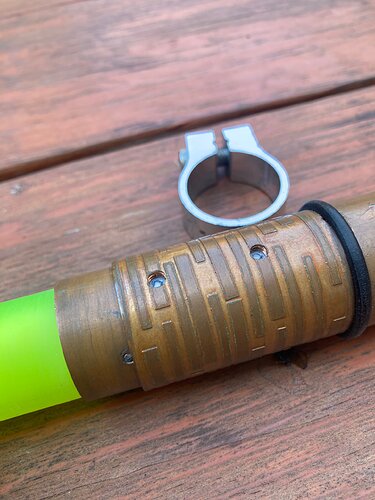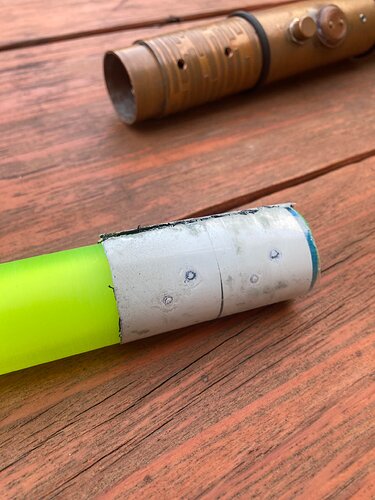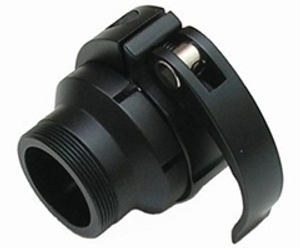Looking at the engineering of detachable saber blades, I see two problems people have.
One is that the blade comes loose during use and is sent flying, and we are told to “tighten the Allen screws frequently”. Now, a small number of screws with nothing but friction locking to hold them in place, with many blade attachments being compromised by just one of the screws coming loose, and with the screws only making surface contact with the blade, this all comes across to me as a genuinely bad way of securing a slippery and deformable piece of plastic in the hilt. A chuck-type clamp holder with a large contact area and some high friction coating on the inside would make a lot more sense. It could be made as simple as a rubber or silicone cylindrical bushing inside a short metal tube, with a threaded ring at one end to compress the bushing in the length-wise direction, thereby making it expand in thickness and lock the blade firmly in the metal tube. The threaded ring could have an additional locking mechanism to prevent accidental unscrewing during handling, like a quick release drill chuck. This is neither difficult nor expensive to build, and it would make accidental blade tosses a total non-issue. I have seen this kind of simple expansion-friction lock used to hold buouys to a steel wire, resisting very strong pulling forces without a sweat. An even simpler attachment would be putting an ordinary hose clamp on a rubber or silicone tube with the blade inside. Hose clamps are available in all kinds of shapes, from the traditional screw-on perforated metal bands to spring-loaded designs with a very low profile, and versions with quick one-step lock and release.
So, why the design with the constantly failing Allen screws? What am I missing?
The second problem is that pogo pin connectors are incapable of carrying the strong currents required by modern, high intensity 5V LED strips, which leads to several pins being used in parallel for the power lines. Now, pogo pins with their small points of contact and their low-friction, low-force, spring-loaded sliding contact pins are just about the worst possible choice for an almost completely stationary high current connection that just needs to handle small vibrations. A standard pin and sleeve connector with a large high-friction contact area, i.e. a simple socket and plug, can carry significantly more current, it’s a lot cheaper, and there are plenty of existing standard connectors to choose from that could do the trick, like the trusty and battle tested 3-pin “Cannon” XLR plugs. Those in particular are good enough to serve as power connectors for some electric scooters, which pull around 20A from their battery packs.
So, why the pogo pins? Again, what am I missing?
I built my own detachable blade saber with a friction locking hilt and XLR connectors, and it works absolutely great, but I’m a newbie, and I feel like I must be missing something here. Any help with understanding the reasoning behind the use of Allen screws and pogo pins would be appreciated.





